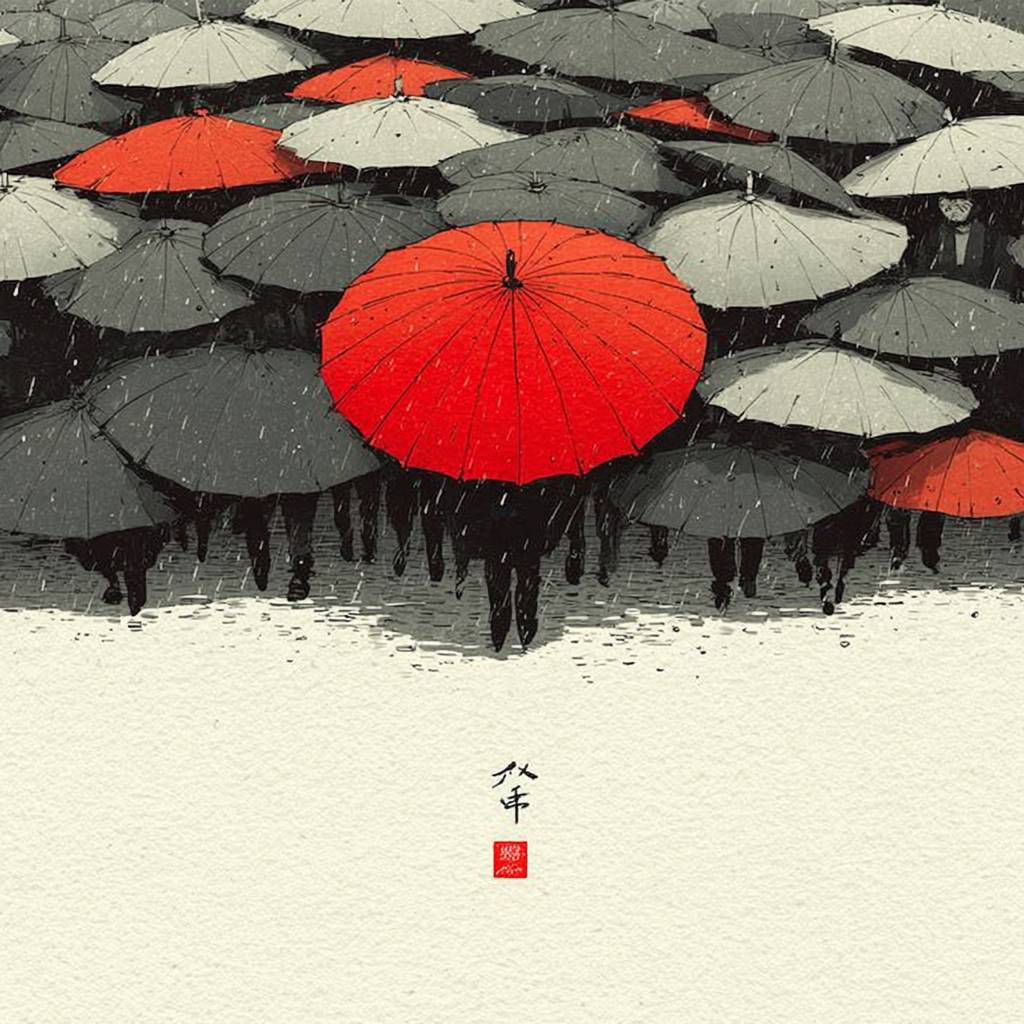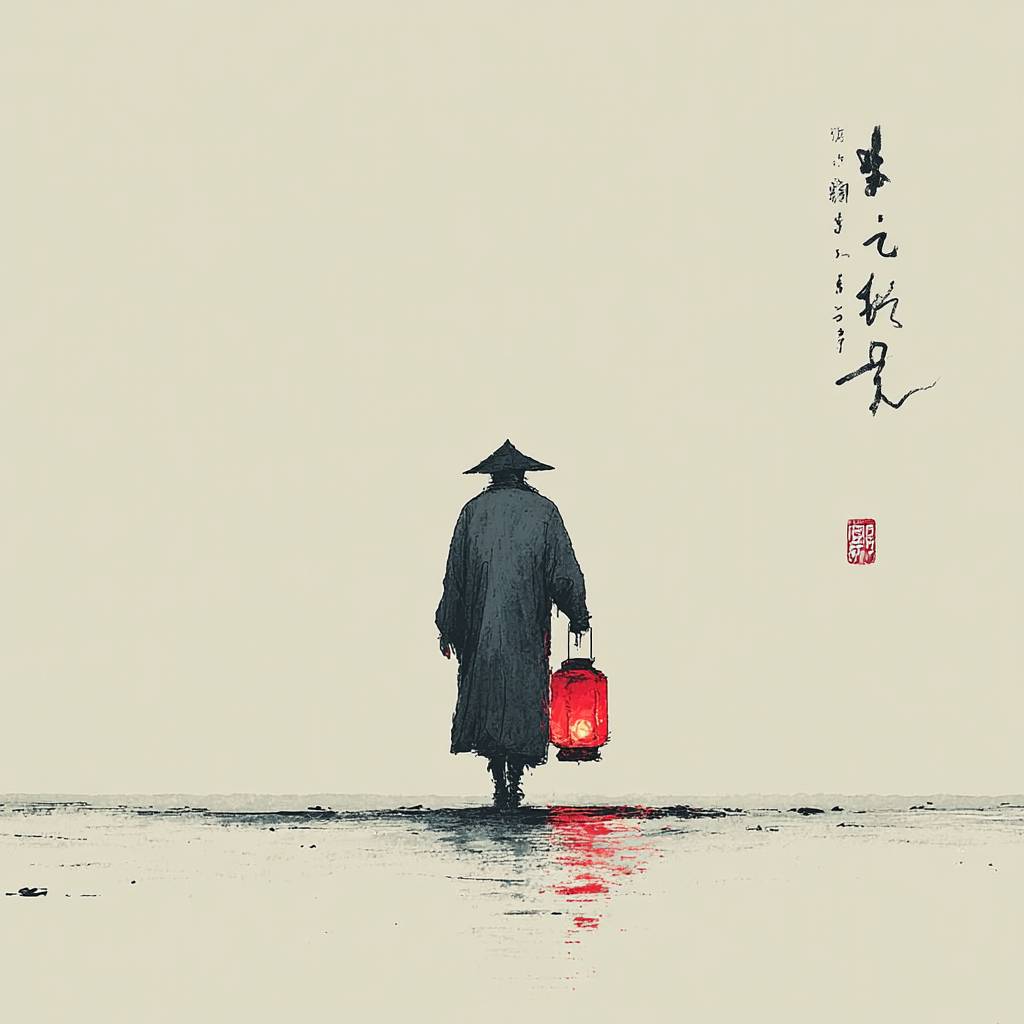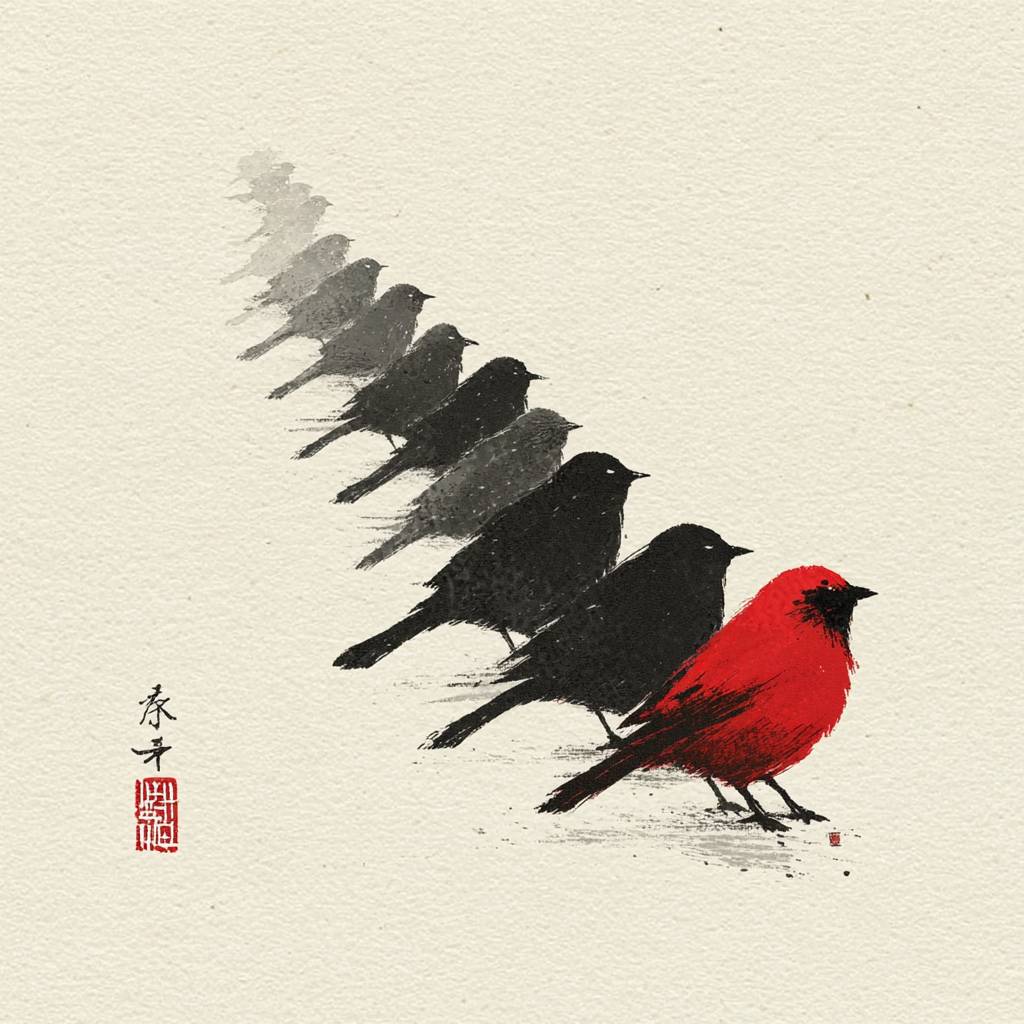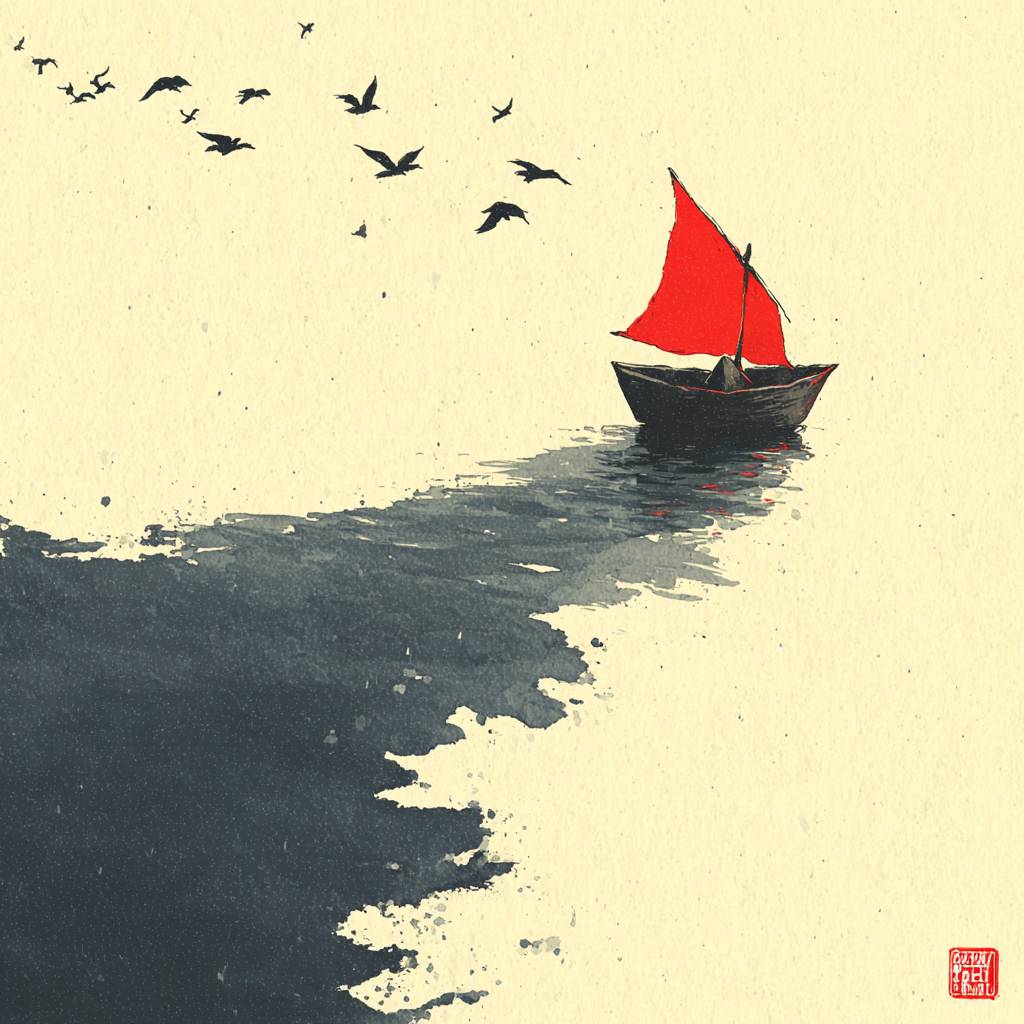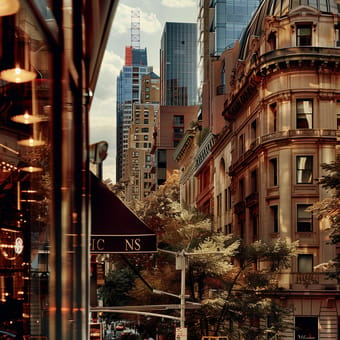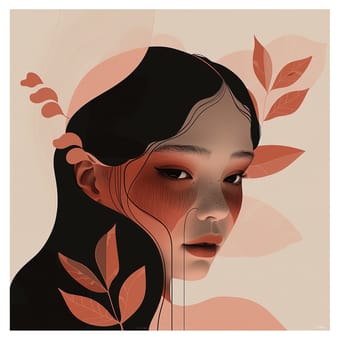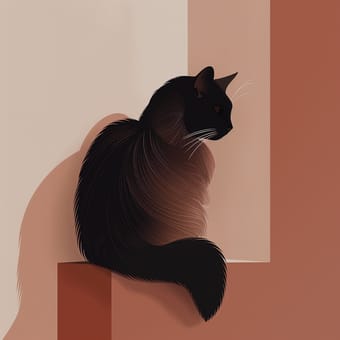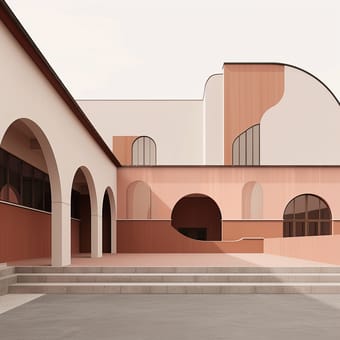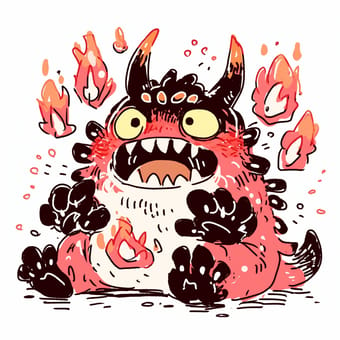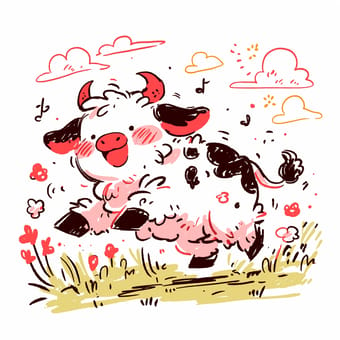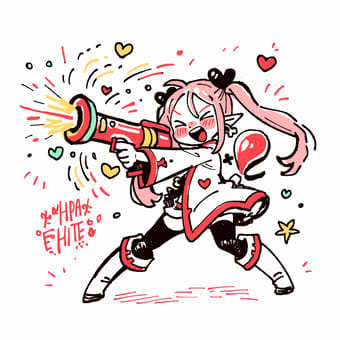Art Style Type
This SREF style blends elements of East Asian ink wash painting and contemporary minimalism. It inherits the "negative space" aesthetics and expressive brushwork from traditional Chinese painting, while adopting the simplified composition and restrained color palette of modern design. This style belongs to the Neo-Orientalism category because it reinterprets traditional Eastern aesthetics through a modern visual language, maintaining classical charm while possessing contemporary sensibilities.
Style Characteristics
The defining characteristic of this SREF is its extreme color restraint and poetic use of negative space. The overall palette is dominated by gray and white tones, with only small amounts of vibrant color (typically red) serving as visual focal points, creating powerful contrast effects. The composition is exceptionally clean, eliminating all unnecessary details to focus the viewer's attention entirely on core elements. This style is impressive because it can express profound emotions with minimal elements, embodying the "less is more" aesthetic philosophy.
Style-Enhancing Prompt Keywords
- "Zen atmosphere": Pairing with this phrase can further strengthen the tranquil ambiance and spiritual depth of the work, creating a more meditative sense of calm
- "Ink wash bleeding": Using this term can enhance the expression of traditional painting techniques, making color transitions more natural and soft while adding poetic quality
- "Negative space aesthetics": Adding this element makes the handling of empty spaces more sophisticated, improving compositional balance and visual breathing room
Recommended Application Scenarios
This style is particularly suitable for cultural brand design, luxury product packaging, zen-inspired interior decoration, and art book covers. In game art, it's perfect for creating concept art for martial arts or ancient-themed games. For commercial applications, this style serves well for visual branding related to tea culture, incense ceremony, calligraphy, and other traditional cultural elements.
 Library
Library